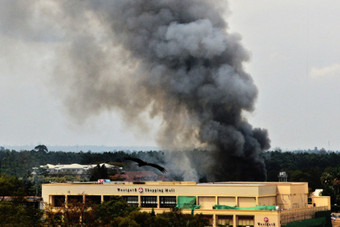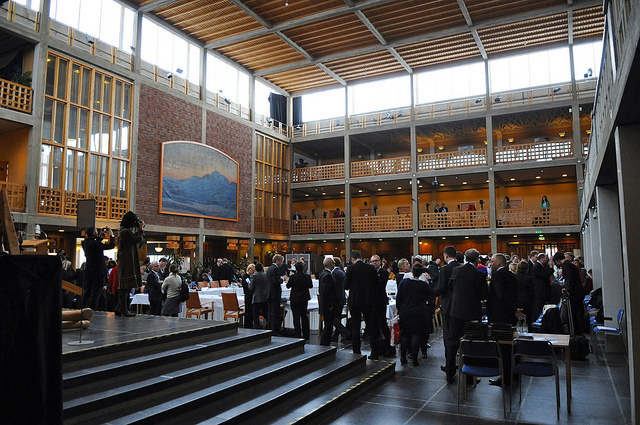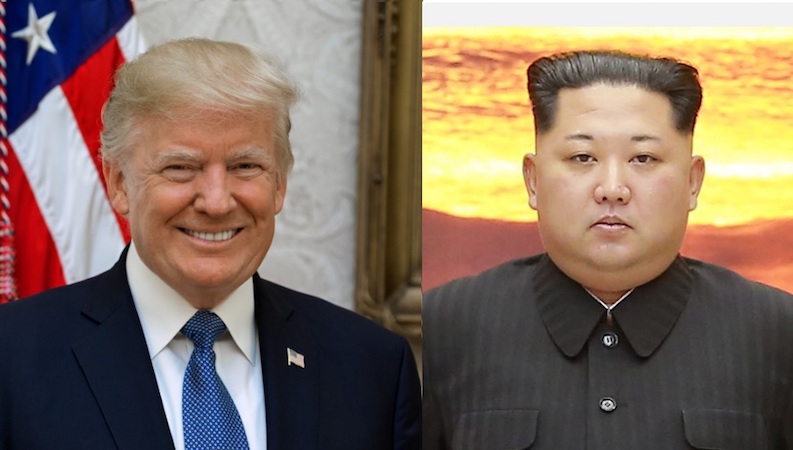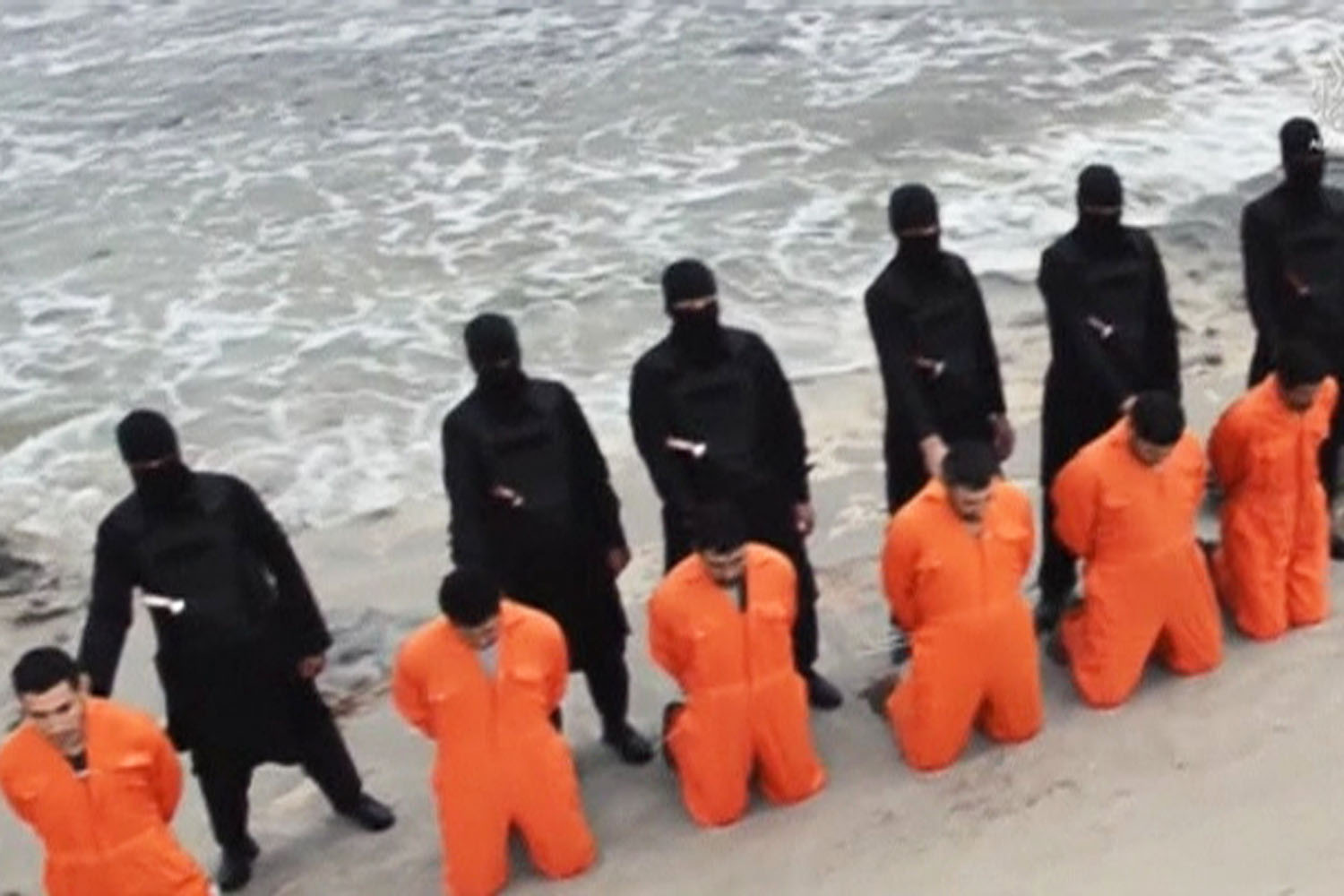Two weeks after Somalian al-Qaeda affiliate al-Shabaab assailed Nairobi’s swanky Westgate Mall, Kenyan authorities remain under siege. Though the four-day confrontation between Kenyan forces and al-Shabaab ended on September 24, 2013, the Kenyan government continues to face a barrage of questions as to whether or not the attack might have been prevented or better contained.
These questions were prompted by recently published counter-terrorism documents, which suggest that Kenyan authorities had intelligence pointing to an attack in Nairobi the day before the attack itself. These documents describe storming a Nairobi building and holding hostages.
This is only the most recent evidence supporting accusations of negligence and mismanagement by Kenyan authorities in response to this national tragedy. In fact, Kenyan security forces were first discredited while the assault was still underway by an unlikely medium: Twitter.
[captionpix align=”right” theme=”elegant” width=”300″ imgsrc=”http://natoassociation.ca/wp-content/uploads/2013/10/kenya-military.jpg” captiontext=”Kenya Defense Forces (KDF) arrive on September 22, 2013 at Nairobi’s Westgate Mall.”]
The use of this social media platform by government authorities in response to national disasters is hardly novel, and Kenya is no exception. With tweets such as, “This will end tonight. Our forces will prevail. Kenyans are standing firm against aggression, and we will win,” Kenyan forces sought to reassure followers and threaten adversaries.
What is highly unique about Twitter’s role in the Westgate attack is the fact that the terrorists were tweeting, too. For four days, al-Shabaab used Twitter to glorify its militants, taunt security forces, and attempt to justify their actions in Somali, Arabic, English and Kiswahili.
When the assault began on September 21st, 2013, al-Shabaab’s twitter feed reported that “The Mujahideen entered #Westgate Mall today at around noon and are still inside the mall, fighting the #Kenyan Kuffar inside their own turf.”
In an apparent attempt to justify the attacks, al-Shabaab tweeted that “The attack on #Westgate Mall is just a very tiny fraction of what Muslims in Somalia experience at the hands of Kenyan invaders.”
Twenty hours into the siege, the group tweeted that Kenyans caught in the crossfire were like “rabbits caught in the headlights.”
When rumors surfaced that Kenyan officials sought to negotiate with the rebels, al-Shabaab tweeted, “We’ll not negotiate with the Kenyan govt as long as its forces are invading our country, so reap the bitter fruits of your harvest.”
[captionpix align=”left” theme=”elegant” width=”250″ imgsrc=”http://natoassociation.ca/wp-content/uploads/2013/10/map-africa-horn.jpg” captiontext=”Al-Shabaab alleges that its recent attack on Westgate Mall was in retribution for the presence of thousands of Kenyan soldiers in southern Somalia.”]
Over the course of the next three days, the battle of bullets within Westgate was matched by a war of words in cyber space, in which Kenyan authorities and al-Shabaab sold very different stories.
As Kenyan authorities assured followers that the confrontation was nearly over, al-Shabaab posted a photo of two alleged attackers unruffled and strolling through the mall.
As Kenyan authorities continued to assure followers of a pending victory, al-Shabaab claimed, “There are countless number of dead bodies still scattered inside the mall, and the Mujahideen are still holding their ground.”
In response to these messages, Kenyan authorities tweeted that all Kenyans should “ignore the propaganda of those intent on dividing us and breaking us down.”
In short, Twitter made it possible for al-Shabaab to present an alternative sequence of events than what was propagated by Kenyan authorities. Whether or not their version was valid, al-Shabaab threatened the Kenyan government’s monopolization of information at a time when national security was unquestionably at risk.
Beyond its direct consequences in Nairobi, Al-Shabaab’s use of Twitter is highly significant in that it poses a momentous challenge to popular conceptions of terrorism.
First, as an al-Qaeda affiliate that seems, generally speaking, opposed to all things Western, it seems strange that al-Shabaab would employ and apparently endorse an obvious product of American venture capital. Terrorists such as al-Shabaab are branded as backwards in the West, and yet Twitter is unquestionably mainstream. Indeed, Twitter is employed by al-Shabaab for the same reason that everyone else subscribes: to bypass traditional news sources and expand outreach.
Second, through its use of Twitter, al-Shabaab has forced users to conceptualize terrorists as accessible, when they are generally understood as existing only at the fringes of society. Recent events in Nairobi have made clear that terrorists are perhaps only one click away. Whereas before terrorists occupied only the dark corners of the world, today, they are in everyone’s pocket and much closer to our minds.
Any suggestion that terrorists may be mainstream or accessible poses a significant threat to current counter-terrorism efforts. National governments invest billions to keep terrorists at bay and brand them in a certain light. Twitter and other social media platforms give these terrorist groups a forum to disseminate their message first-hand. If other terrorist groups choose to follow al-Shabaab’s example, governments will be forced to respond.
Finally, future copycats are also dangerous to Twitter. Al-Shabaab has had its Twitter account shut down a total of six times, only to re-emerge yet again under a different name. If other extremist groups choose to employ Twitter to propagate hate or violence, it will be difficult for Twitter to contain so many fires.




